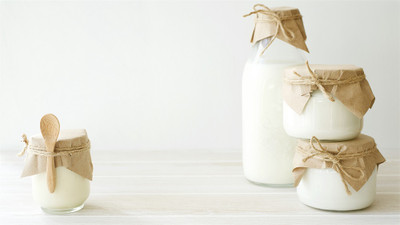Making homemade kefir
Posted by The Wares Team on 6th Mar 2019
We wrote recently about the process of fermentation and, more specifically, about kombucha tea and how to make it. In today’s blog post, we thought we’d continue on the theme of fermented drinks with a look at kefir, examining what exactly it is, and explaining how to make it. If you’re looking for a homemade ‘tonic’ that is quick and easy to make and one that has positive health benefits, look no further than kefir. Let’s find out more about this unusual milk drink…
What exactly is kefir?
Kefir, sometimes called kephir, is a fermented milk drink that bears some resemblance to natural yoghurt, but in a drink form. Like kombucha tea, it has a slightly sour taste and a little bit of fizz. That fizz comes from the carbon dioxide that is produced as part of the fermentation process that the milk goes through to become kefir. The drink originates from the Caucasus Mountains, in the south of Russia, but in recent years it has become increasingly popular around the world and is used as a daily health tonic by many.
Health benefits of kefir
As it’s usually made with whole milk, kefir is obviously a great source of calcium, which is important for healthy bones and teeth. It can also be made with goat’s milk or even sheep’s milk or coconut milk.
There are more health benefits to kefir beyond it simply being a good source of calcium. Like the kombucha tea that we mentioned in our previous article, kefir contains probiotics which are great for improving digestion and gut health. That means it could help those suffering from IBS or digestive discomfort.
Some people who have dairy intolerances find they can still drink goats milk and, indeed, because kefir’s fermentation process breaks down the lactose in milk, others even find that they can tolerate kefir made with cow’s milk.
If you have a dairy intolerance or sensitivity, it may well be worth exploring whether you are able to drink goat’s milk, or kefir in general. Of course, whether you have a serious dairy allergy or just a mild level of sensitivity to dairy, it is wise to consult your doctor if you are at all unsure about trying kefir or any kind of milk product.
If you decide to make your kefir using goat’s milk, there are other potential health benefits too. Goat’s milk is widely believed to have beneficial properties for those with problem skin, eczema, anaemia and even osteoporosis.
How to make your own kefir
Making kefir really is simplicity itself. All you need is whole milk, kefir grains and a glass jar or two. Mason jars are ideal for making kefir, if you have some available.
Always sterilise any glass jar before starting to make kefir, by washing it in hot, soapy water, drying it with a clean tea towel then placing it in the oven at 180°C for 15 minutes. You can sterilise a whole batch of mason jars or jam jars at the same time, if you need to.
If you don’t already have any kefir, you’ll need to source some kefir grains. These can be donated by a kefir-making friend, or you can buy them online from a reputable supplier. Kefir grains aren’t actually grains at all, rather, they’re a slightly jelly-like culture, which provides the yeasts and bacteria that are needed to trigger the fermentation process in the milk you use.
You can buy fresh kefir grains online, but these have to be despatched to you quickly and used as soon as you receive them; otherwise there is a risk that the live culture will die. You can also buy dried grains, which have a longer shelf life - these would be a good option for anyone who wants to only make kefir at the weekend, for example, rather than making a fresh batch every day.
To make your first batch of kefir, add a teaspoon of kefir grains to a sterilised glass jar filled with milk, and pop the lid on the jar. Keep the jar at room temperature for around 24 hours to allow the yeasts and bacteria in the kefir grains to ferment the milk.
When it’s ready, the milk will have thickened to the consistency of a smoothie and it will taste slightly sour, a little like natural yoghurt. Strain the kefir to extract the kefir grains and use these again to start your next batch, which will be ready in another 24 hours.
If you are planning to drink a glass of kefir every day at breakfast as part of a health regime, then it would make sense to use one glass jar for each family member who is going to drink the kefir. That will work better than trying to make a single larger jar of kefir for the whole family, as it will be easier to maintain the right amount of kefir grains for the quantity of milk.


